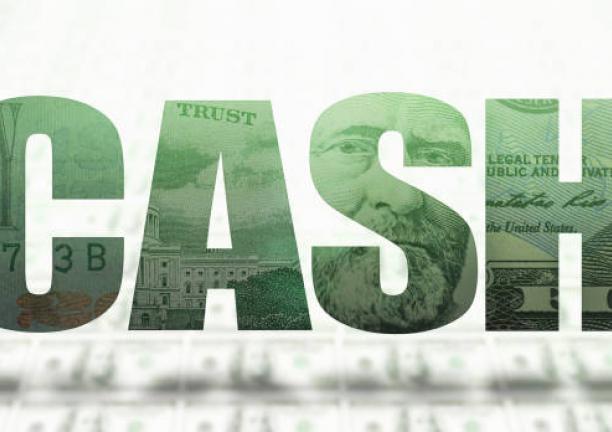The Bottom Line: For at least three reasons it seems unlikely that plan sponsors will offer Bitcoin in company sponsored 401(k) plans any time soon.
Introduction and conclusion
On April 26, 2022 Fidelity Investments announced the launch of Fidelity’s workplace Digital Assets Account (DAA), the industry’s first offering that will enable individuals to have a portion of their retirement savings allocated to bitcoin through the core 401(k) plan investment lineup. The timing of Fidelity’s announced new offering, which will be broadly available to employers by mid-year, closely coincides with the Biden Administration’s issuance on March 9th of an Executive Order on Ensuring Responsible Development of Digital Assets, the Department of Labor’s (DOL) publication on March 10th of a Compliance Assistance Release that raised a cautious flag for plan fiduciaries to exercise extreme caution on the addition of a cryptocurrency option to a 401(k) plan’s investment menu for plan participants and a period of significant volatility recorded by Bitcoin. Whereas Fidelity, which administers 401(k) style plans for some 23,000 companies with 20 million plan participants, is staking out a long-term leadership role in digital assets, it seems unlikely that plan sponsors will extend this offering to employee participants in company sponsored 401(k) plans any time soon for at least three reasons: These include fiduciary and investment concerns, potential exposure to litigation and, at the present time, a likelier preference for prioritizing the investigation of ESG investment offerings in 401(k) plans rather than the addition of Bitcoin with its reported high CO2 emissions.
Fidelity announces plan to offer Bitcoin through the core 401(k) plan investment lineup
According to Fidelity, the firm’s announcement represents a continued commitment to evolving and broadening its digital assets offerings amidst steadily growing demand for digital assets across investor segments. According to the Fidelity Digital Assets 2021 Institutional Investor Digital Assets Study, 30% of U.S. institutional investors surveyed would prefer to buy an investment product containing digital assets. Meanwhile, Fidelity estimates that roughly 80 million U.S. individual investors currently own or have invested in digital currencies¹.
Department of Labor expresses serious concerns about cryptocurrencies and raises fiduciary red flags
The Department of Labor has expressed serious concerns about plans’ decisions to expose participants to direct investments in cryptocurrencies or related products, such as NFTs, coins, and crypto assets. The DOL noted that the assets held in retirement plans, such as 401(k) plans, are essential to financial security in old age and must be carefully protected. The DOL stated, “That’s why plan fiduciaries, including plan sponsors and investment managers, have a strong legal obligation under the Employee Retirement Income Security Act (ERISA) to protect retirement savings. These fiduciaries must act solely in the financial interests of plan participants and adhere to a high standard of care when managing plan participants’ retirement holdings.” The DOL went on to state that cryptocurrencies can present serious risks to retirement savings, including valuation concerns, the introduction of obstacles to making informed decisions, the fact that prices can change quickly and dramatically, exposing participants to the potentially large losses, and the evolving regulatory landscape. Based on these concerns, the Department has cautioned plan fiduciaries to exercise extreme care before they consider adding a cryptocurrency option to a 401(k) plan’s investment menu for plan participants. Considering the DOL’s clearly stated concerns, plan fiduciaries are likely to proceed with great caution. This stance is likely reinforced because of the issuance on March 9th of President’s Biden’s Executive Order calling, in part, on the Department of the Treasury and other agency partners to assess and develop policy recommendations to address the implications of the growing digital asset sector and changes in financial markets.
Plan sponsors may be exposing themselves to DOL exams and litigation risk
Another concern for plan sponsors is that they may be exposing themselves to DOL exams and litigation risk brought on by plan participants. In recent years, there has been a proliferation of lawsuits directed at plan fiduciaries who have been accused of not acting prudently and loyally in fulfilling their obligations to the plan under ERISA, particularly as related to fund costs and secondarily, inappropriate investment choices. While ERISA does not spell out specifically what type of investment options are appropriate or how to monitor them, it does set out a standard of prudence to apply when choosing investments. This involves prudent decision-making, including a review of an investment’s suitability based on its absolute and relative historical performance track record over various relevant time intervals. Given the limited track record of cryptocurrencies, their overall risk profiles and significant volatility, plan sponsors run the higher risk of exposing themselves to participant litigation if investors experience sharp declines in the investment value of Bitcoin.
The growth of the cryptocurrencies market has largely taken place in the last five years, since about July 2017 when the number of cryptocurrencies along with the number of investors began their rapid expansion with an estimated number of more than 13,506 in existence¹. Bitcoin was launched some thirteen years ago and its performance was relatively stable until the onset of the COVID pandemic. Except for a brief spike at the end of 2017, Bitcoin traded with a band that was again pierced starting in October of 2020. Bitcoin has been highly volatile since then. More recently, Bitcoin has lost 56% of its value as its price dropped to $28,537 on May 12, 2022 from $65,466.84 on November 7, 2021.
Are plan sponsors more likely to add sustainable investment options or Bitcoin in the near-to-intermediate term?
A third consideration for 401(k) plan fiduciaries is the increased focus on climate change that has directed attention on the usage of energy by cryptocurrencies in the mining process and the resultant levels of greenhouse gas emissions. This, even as calculating the energy use of cryptocurrencies is exceedingly difficult due to the many parameters at play and spotty data. Bitcoin in particular, due to its dominant market position, high volume of transactions and reliance on a high energy consuming blockchain verification methodology, has been called out for its very high energy usage even as some recent data indicates that energy usage may have moderated somewhat. Further, while environmental factors top the list of ESG concerns, cryptocurrencies are also exposed to various other ESG-related risks and opportunities that are likely to concern sustainable investors. (See previously published article entitled Environmental considerations for sustainable cryptocurrency investors https://sustainableinvest.com/environmental-considerations-for-sustainable-cryptocurrency-investors/). At the same time, data continues to show that a small percentage of defined contribution plans offer sustainable investment options, and a very small percentage of DC assets, by some estimates 3% of plans representing 0.1% of plan assets, are invested in funds that explicitly market themselves as sustainable investments.
This is at a time when there is reportedly increasing interest in this investment approach by individual investors. Until recently, there were still a limited number of sustainable registered investment products available to investors with a sufficiently long performance history to permit a proper evaluation of their suitability. This is beginning to change as an increasing number of sustainable investment funds, both active and passively managed funds, are reaching the market. It seems to us that plan sponsors are more likely to direct their attention to the task of adding one or more sustainable investing options to current DC plans rather than going through the due diligence process of qualifying Bitcoin as an investment option anytime soon.
¹Source: CoinMarketCap.
²Source: Plan Sponsor Council of America.





